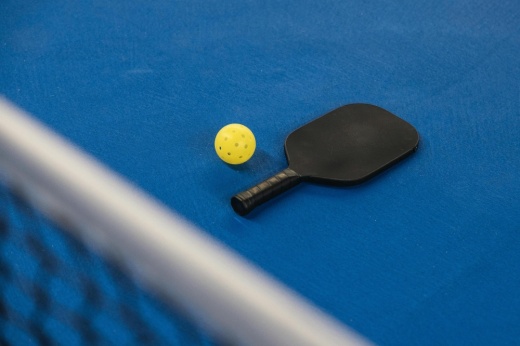TeachMe.to releases an annual pickleball report depicting the top cities in the country for pickleball. Austin came in fourth place on the list and was deemed a “pickleball hotspot” for the South.
Dr. Ryan Tierney, radiation oncologist with Texas Oncology, spoke to Community Impact about how Texans can simultaneously enjoy the newly popularized sport while being mindful of skin safety.
What are the concerns with Austin being named a pickleball hotspot considering the city’s weather?
It's an outdoor sport, and as part of that, it's pretty easy to get a lot of sun exposure if you're playing a lot of pickleball, especially down here in Texas. ... The concern is that with the excessive sun exposure with playing any outdoor sports or pickleball, we can have an increased risk of skin cancer, so it's important to take precautions to try to prevent that from occurring.
To what extent can sun exposure damage your skin?
The most-feared complication could be the development of skin cancer, but we can also see increased aging with long-term sun exposure. We can see sunspots develop, in addition to the different types of skin cancers which can be created.
An average pickleball game can last between 15-25 minutes, but usually people will play multiple games in one session. How long would you say it takes for your skin to be affected by sun damage?
Everybody is different, and everybody has different personal risk factors for skin cancer, and those include things like a history of indoor tanning. It's important to know your family history of skin cancers, including melanoma. A personal history of past skin cancers can also impact someone's risk, but essentially, everyone is at risk for developing skin cancer and should take precautions regardless of skin type. However, people with fair skin are at a higher risk of developing skin cancer, especially those who have freckles; blue or green eyes; or red, blonde or light brown hair. Anybody who notices anything new or different on the skin that doesn't go away should see a dermatologist and have it investigated, because skin cancer can occur in ... almost any age group.
Can you give some examples of what people should look out for in terms of skin changes?
The most common warning signs of skin cancer are new or unusual changes on the skin. When it comes to worrying about melanoma, we have something called the ABCDE guide, and that can be a useful tool when checking your skin for melanoma warning signs. ... A stands for asymmetry. That means that one half of the lesion is different from the other half in size, shape or color. B means border, meaning the edge or border of the lesion is not smooth. C stands for color. That means that the color of the lesion can contain not just one color, but various shades of tan, brown, black and ... in some cases, red, white or blue. ... D stands for diameter or dark—that would be a lesion that is larger than others or growing, or that is darker than others, regardless of size. ... Finally, E stands for evolving, which means that the lesion is changing over time, or it's developing new symptoms, including ... bleeding, crusting or itching. If you see any of those, it's important to talk to a dermatologist and have them evaluate deletion.
How can people protect themselves from sun damage while playing pickleball?
What we recommend is limiting exposure. Avoid hitting the pickleball courts and being outside too long, particularly between the hours of 10 a.m. and 4 p.m. when we know that UV light is the strongest. If you are going to be outside, then protect the skin either with long-sleeve shirts or pants. I know that can be difficult with the heat we have in Texas, so it can be important as well to use a broad spectrum, water-resistant sunscreen, an SPF of 30 or higher on areas of skin that are exposed to the sun. It should be reapplied every 40-80 minutes. It's important to take a look at the label because sunscreens can be different. Wearing a hat with a wide brim can help protect the face, nose and ears from sun exposure, and wearing sunglasses can also help protect the eyes and the skin around the eyes as well.






